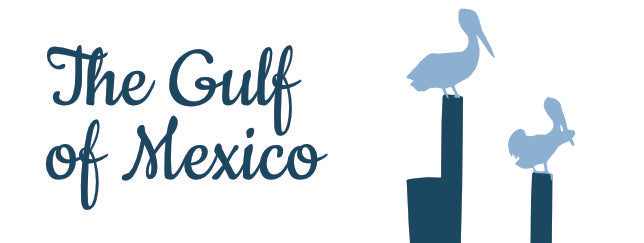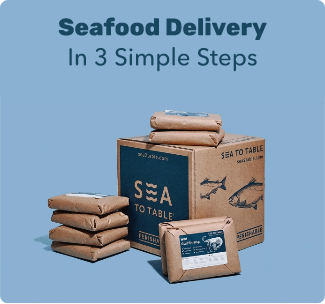
Did you know that the Gulf of Mexico is the 9th largest body of water in the world? Covering about 6,000 square miles, it is bordered by five US states to the north, five Mexican states in the west, and Cuba in the southeast. Its sunny white beaches and blue waters are amongst the most beautiful on the planet. The gulf’s warm waters and diverse habitats are home to many marine species, from the giant sperm whale to the humble, yet tasty, Wild Gulf Shrimp (we’ll get to those in a minute).

The Gulf of Mexico, by the Numbers
Six hundred and sixty quadrillion: How many gallons of water in the Gulf (give or take a gallon or two)
Fifteen thousand four hundred and nineteen: Different species identified by scientists in the Gulf of Mexico
Five hundred and forty-six thousand four hundred and seventy-eight: Metric tons of seafood landed by commercial fishermen in 2014
Forty-nine: Species of bloodthirsty sharks
Thirty-three: Number of major rivers that flow into the Gulf
Four: Species of sea turtles that call the Gulf home
Weird Things Found Under the Gulf’s Waters…
The Sigsbee Deep
Although it is a relatively shallow body of water, the deepest part of the Gulf — a 300-mile-wide patch known as the Sigsbee Basin or Sigsbee Deep—is 14,000 feet deep and surrounded by 4,000 foot cliffs on three sides.
The Jacuzzi of Despair
The Jacuzzi of Despair is a deadly underwater lake in the Gulf of Mexico. Formed millions of years ago but only just discovered, it is a toxic hellscape of warm, super-concentrated brine and methane bubbles. Any unlucky fish wandering into the Jacuzzi of Despair would find itself instantly pickled.
Shipwrecks
The NOAA estimates that there are over 4,000 shipwrecks in the Gulf, from a tugboat that was the subject of a daring rescue mission during a tropical storm in the 1960s to German U-boats and 19th century pirate ships. Scientists and archaeologists are seeking to learn all they can about the histories of these ships, as the ocean slowly reclaims them. One, the U.S.S. Narcissus, which sank in 1866 off Tampa, is now an underwater archeological reserve.
And Finally, Wild Gulf Shrimp
The Gulf supports some of the most important fisheries in the United States, and none is more vital to the area’s economy than the shrimp fishery. But why are Shrimp so prolific in the Gulf? The Gulf has a half-million acres of salt marshes in Florida alone, which are habitats important for the growth and survival of juvenile shrimp. To put it in perspective, one-half of an acre of salt marsh produces approximately 250 pounds of shrimp per year – or approximately enough shrimp to feed 69 people for one year (based on the U.S. annual per capita shrimp consumption of 3.6 pounds). This bounty is sustainable as long as US fisheries are the well-managed ones they are today, with quota limits and bycatch reduction techniques. This stands in contrast to farmed and imported shrimp, which are linked to, amongst other bad things, the destruction of Mangrove habitats, unsustainable by-catch percentages, and pollution.
Another thing sets Sea to Table Wild Gulf Shrimp apart from inferior shrimp… the use of chemicals. Unlike some product destined for grocery and big-box stores, our Wild Gulf Shrimp is minimally processed and never defrosted and then re-frozen, and chemicals are never, ever used. As soon as their shrimp-filled nets hit the deck, crew members hand-sort the shrimp by size. The shrimp is then immediately peeled and flash-frozen in a chemical-free seawater glaze to preserve freshness right there at sea. If you are used to grocery store shrimp you will immediately taste the difference and you’ll be hooked on Sea to Table Wild Gulf Shrimp forever. It’s the next best thing to a vacation to the Gulf (avoid the Jacuzzi of Despair at all costs).
← Older post Newer post →

